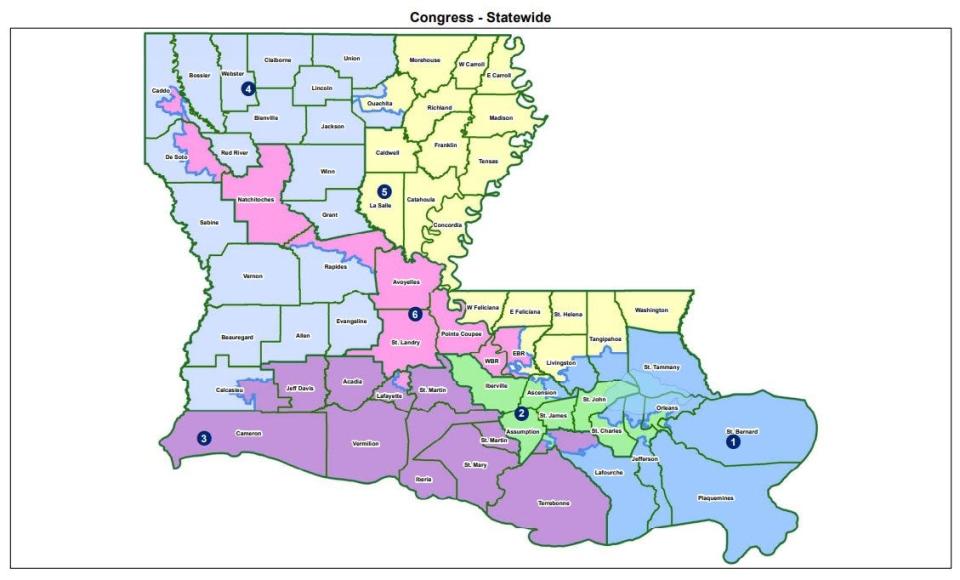Louisiana passes congressional map that includes Shreveport in second Black district
- Oops!Something went wrong.Please try again later.
- Oops!Something went wrong.Please try again later.
- Oops!Something went wrong.Please try again later.
- Oops!Something went wrong.Please try again later.
Louisiana's Legislature has approved a new congressional map that adds a second majority Black district with boundaries stretching from Baton Rouge to Alexandria to Shreveport, ending two years of stops and starts and court battles.
The map that tracks along the I-49 corridor creates a radically different 6th Congressional District that could end current incumbent Republican U.S. Rep. Garret Graves' career in Congress in next fall's elections.
Its boundaries were preferred by new Republican Gov. Jeff Landry, who is expected to sign Senate Bill 8 by Republican Harrisonburg Sen. Glen Womack into law within days.
Womack said he drew the map to protect Louisiana's considerable congressional muscle, leaving Republican Speaker Mike Johnson, Majority Leader Steve Scalise and Appropriations Committee member Julia Letlow with safe boundaries for reelection.
Womack told USA Today Network his map was designed to protect "the powers that be" in Congress.
Last November, a federal appeals court upheld federal Judge Shelly Dick's earlier ruling requiring Louisiana's congressional map be redrawn to include a second majority Black district out of six.

State lawmakers previously failed to comply with Dick's order that will likely cost Republicans a seat in Congress, but Landry urged lawmakers to draw a new map so the new boundaries won't be left up to Dick, who Landry described as a "heavy-handed" federal judge.
"It is time to stop averting the issue and confront it head on," Landry said in his address to the Legislature Monday to open the Special Session. "We are here today because the federal courts have ordered us to perform our job."
"We do not need a federal judge to do for us what the people of Louisiana have elected you to do."
Graves criticized the map that puts his political future in peril because it splits communities of shared interests and minimizes transparency and public participation.
“This map will not survive thorough judicial scrutiny of consistency with redistricting principles," Graves said in a statement.
There were vocal opponents like Republican Monroe Sens. Jay Morris and Stewart Cathey, who were furious Ouachita Parish wasn't left whole in Letlow's 5th Congressional District, instead splitting Ouachita between the 5th District and Johnson's 4th District, calling it a "travesty and disservice."
It's means Monroe and Ouachita will no longer be the population hub of any congressional district.
But others like Shreveport Democratic Sen. Sam Jenkins hailed the new map as "historic" and a move toward fairer representation.
"Louisiana has taken a historic step in adopting a congressional map that creates two African-American districts based on population," Jenkins said. "This is a fair map passed with bipartisan support. I commend the Legislature for taking this bold step forward."
More: Speaker Mike Johnson urges Louisiana to ignore court order to create Black district
Greg Hilburn covers state politics for the USA TODAY Network of Louisiana. Follow him on Twitter @GregHilburn1.
This article originally appeared on Shreveport Times: Louisiana passes congressional map with Shreveport in second Black district

